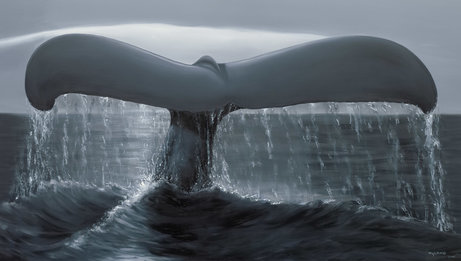
New York Times, Dec. 1 , 2023 — Scientists found that dolphins have an ability to sense electric fields, which may help them hunt and navigate the seas.
Newborn bottlenose dolphins sport a row of hairs along the tops of their jaws. But once the animals are weaned, the whiskers fall out.
“Everybody thought these structures are vestigial — so without any function,” said Guido Dehnhardt, a marine mammal zoologist at the University of Rostock in Germany.
But Dr. Dehnhardt and his colleagues have discovered that the pits left by those hairs can perceive electricity with enough sensitivity that they may help the dolphins snag fish or navigate the ocean. The team reported its findings Thursday in The Journal of Experimental Biology.
Dr. Dehnhardt first studied the whisker pits of a different species, the Guiana dolphin. He expected to find the typical structures of hair follicles, but those were missing. Yet the pits were loaded with nerve endings. He and his colleagues realized that the hairless follicles looked like the electricity-sensing structures on sharks and found that one Guiana dolphin responded to electrical signals. They wondered whether other toothed cetaceans, including bottlenose dolphins, could also sense electricity.
For the new study, the researchers trained two bottlenose dolphins to rest their jaws, or rostrums, on a platform and swim away anytime they experienced a sensory cue like a sound or a flash of light. If they didn’t detect one of these signals, the dolphins were to stay put.
“It’s basically the same as when we go to the doctor’s and do a hearing test — we have to press a button as soon as we hear a sound,” said Tim Hüttner, a biologist at the Nuremberg Zoo in Germany and a study co-author.
Once trained, the dolphins also received electrical signals. “The dolphins responded correctly on the first trial,” Dr. Hüttner said. The animals were able to transfer what they had learned, revealing that they could also detect electric fields. Further study showed that the dolphins’ sensitivity to electricity was similar to that of the platypus, which is thought to use its electrical sense for foraging. A dolphin swam to the rig and rested her jaw on a bar in the experimental rig to position herself. When she felt an electric field produced by two small electrodes positioned above her snout, she left the station for a reward from her trainer.Tim Hüttner
Sharks are far more sensitive to electric fields, which they use up close after they have chased down prey by smell from a distance. But the electrosense might also aid dolphins for a close grab at fish while they’re hunting. The dolphins spot prey with their eyes and by sending clicking sounds that bounce off prey, known as echolocation. But fish bodies also produce electrical fields through the activity of their muscles and gills.Such signals could help the dolphins home in on prey hiding on the seafloor. Bottlenose dolphins perform what’s called crater feeding, said Denise Herzing, a marine mammalogist at the Wild Dolphin Project in Florida who wasn’t involved with the study. “They dig,” she said. “They put their beaks down into the sand, almost up to the eyeballs, and pull out these eels.” Sand may make it harder for dolphins to detect buried fish through echolocation, she said.
Other researchers urged caution. The study used two dolphins, and “we do not know whether this ability is actually used in the wild,” said Juliana López-Marulanda, a marine biologist at University Paris Nanterre.
Dolphins may also use electrosensitivity to navigate. Dr. López-Marulanda and others have observed that dolphins can sense magnetic fields. Because they have bits of magnetic material in their bodies, the electric sense may allow them to feel changes in the Earth’s magnetic field and use something like a magnetic map.
Dr. Dehnhardt wonders if electrosensing may explain mass strandings of healthy whales and dolphins. Researchers have noticed links between shifts of the magnetic field, such as during solar storms, and mass strandings. “This may, for the first time, explain on a sensory basis how this really occurs,” he said. Such strandings don’t occur in baleen whales that — unlike their toothed cousins — use the whiskers they’re born with across their lives, he noted.

